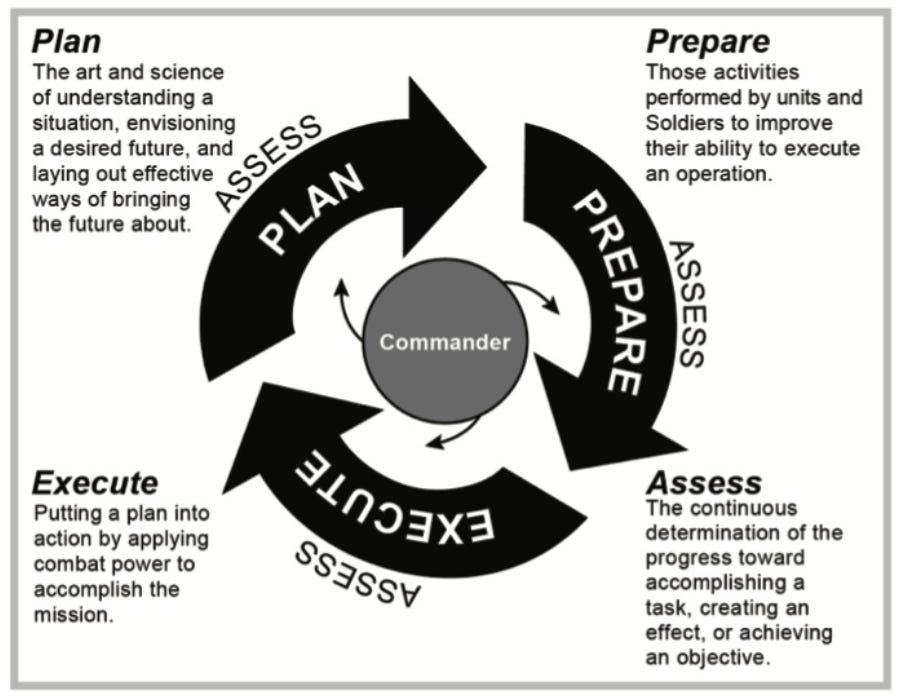
How do you plan your life?
Borrow One Idea: Centers of Gravity
The purpose of a plan is to achieve an objective. In military operations, the focus is on attacking or defending centers of gravity.
HBS Professor Clayton M. Christensen, in a 2010 Harvard Business Review article, wrote:
Over the years I’ve watched the fates of my HBS classmates from 1979 unfold; I’ve seen more and more of them come to reunions unhappy, divorced, and alienated from their children. I can guarantee you that not a single one of them graduated with the deliberate strategy of getting divorced and raising children who would become estranged from them. And yet a shocking number of them implemented that strategy. The reason? They didn’t keep the purpose of their lives front and center as they decided how to spend their time, talents, and energy.
Do you understand what your centers of gravity are? Are they what you think about when you plan your life?
A center of gravity is the source of power that provides moral or physical strength, freedom of action, or will to act. The loss of a center of gravity can ultimately result in defeat. Centers of gravity are not limited to military forces and can be either physical or moral. Physical centers of gravity, such as a capital city or military force, are tangible and typically easier to identify, assess, and target than moral centers of gravity. Forces can often influence physical centers of gravity solely by military means. In contrast, moral centers of gravity are intangible and more difficult to influence; they exist in the cognitive dimension of an information environment. They can include a charismatic leader, powerful ruling elite, or the will of a population.
As an element of operational art, a center of gravity analysis helps commanders and staffs understand friendly and enemy sources of strength and weakness. This understanding helps to determine ways to undermine enemy strengths by exploiting enemy vulnerabilities while protecting friendly vulnerabilities from enemies attempting to do the same. Understanding friendly and enemy centers of gravity helps the commander and staffs identify decisive points and determine an operational approach to achieve the end state.
ADP 5-0, Sections 2-62 and 2-63, PDF page 39
This week, borrow with pride and put into action an assessment of your own centers of gravity. What are your sources of strength? What are the decisive points of those centers of gravity? What can you do with this knowledge?
Get Familiar With: The Operations Process - Planning
Describing anything as both an art and science is the ultimate Get-Out-of-Jail-Free card.
2-1. Planning is the art and science of understanding a situation, envisioning a desired future, and determining effective ways to bring that future about.
ADP 5-0, Section 2-1, PDF page 29
That’s the first sentence of the chapter titled “Planning”! The US Army does not bury the lede.
Nor does it wait long to break out a version of one of the more overused business aphorism:
I tell this story to illustrate the truth of the statement I heard long ago in the Army: Plans are worthless, but planning is everything. Dwight D. Eisenhower
ADP 5-0, Section 2-14, PDF page 31
Plans are not worthless, otherwise no one would make them. If planning is everything, then planning methods matters as much as the plans themselves.
Operational art is the term the US Army uses to describe the method by which a leader should define the concept of operations to resolve a problem.
2-52. Applying operational art requires commanders to answer the following questions:
What conditions, when established, constitute the desired end state (ends)?
How will the force achieve these desired conditions (ways)?
What sequence of actions helps attain these conditions (ways)?
What resources are required to accomplish that sequence of actions (means)?
What risks are associated with that sequence of actions and how can they be mitigated (risks)?
ADP 5-0, Section 2-52, PDF page 38
The elements of operational art are the tools leaders should use to define their concept of operations. This is a prerequisite for detailed planning.
The elements of operational art:
End state and conditions
Centers of gravity
Decisive points
Lines of operations and lines of effort
Tempo
Phasing and transitions
Operational reach
Culmination
Basing
Risk
Think about the last plan you were involved in (or that you created) that went awry. Was the problem with the detailed plan or with one of the elements of operational art (the planning)?
The Guided Discovery for this week will explore the functions of Planning (within the Operations Process), the elements of operational art, and where leaders must focus their thinking during the planning process.
Learn More: Suggested Reading
ADP 5-0, The Operations Process
Pages 2-1 through 2-7 based on printed document (PDF pages 29-35)
Pages 2-10 through 2-15 based on printed document (PDF pages 38-43)
Pages 2-21 through 2-26 based on printed document (PDF pages 49-54)
An overview of Operational Art and planning fundamentals and pitfalls in the Operations Process
These materials will be the focus of Thursday’s Guided Discovery
Catch Up: Last Week’s Content
Study: Operating with Purpose
Guided Discovery: The Operations Process
Always be asking:
1. What is the connection with my leadership development?
2. How does this change my thinking on management?
3. How does this influence planning for life?
4. What can I borrow with pride to use this week?



